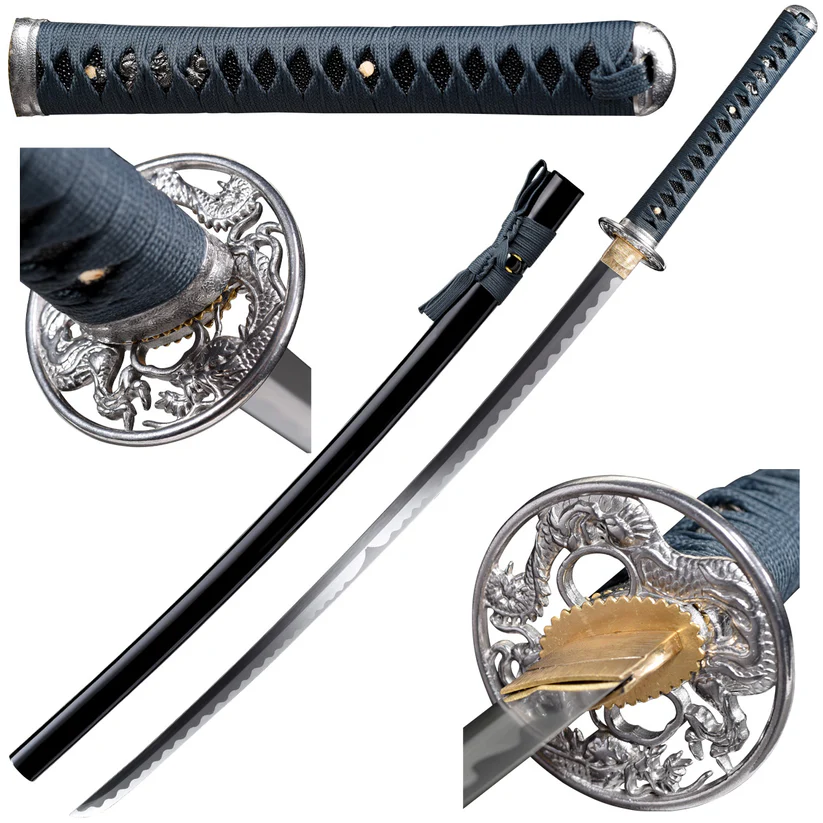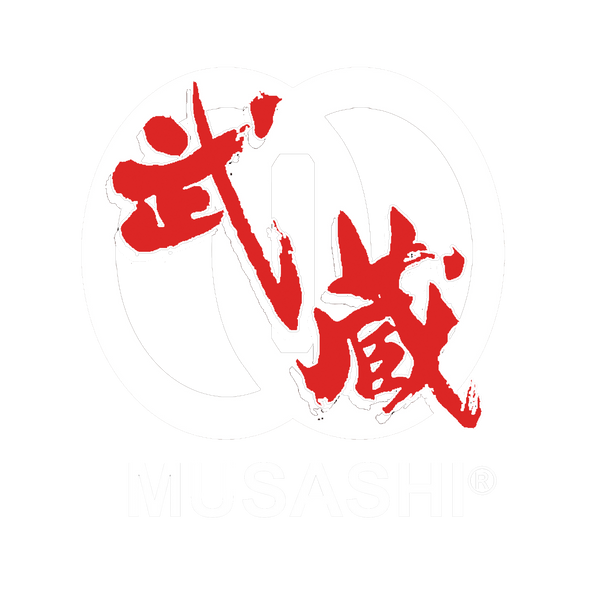
A samurai sword gets its price from several key things: its place in history, how well it’s made, and what it’s made from. Real samurai swords can cost between $5,000 and $400,000. These prices depend a lot on who made the sword, what papers prove its background, and how it was built. The best swords use high-grade steel called T10 and traditional parts, which make them both work well and look beautiful. To set a fair price, experts look at how old the sword is, what it means to Japanese culture, and how many people want to buy it.
Key Takeaways
- Historical authenticity and documentation, including approval papers from trusted organizations like NBTHK, significantly impact a samurai sword’s value.
- Master craftsman reputation determines pricing, with renowned makers like Masamune commanding prices over $200,000 for their work.
- Quality materials and traditional construction techniques, including T10 tool steel and proper differential hardening, directly affect sword value.
- Provenance and ownership history, especially connections to famous samurai or significant historical events, increase a sword’s worth substantially.
- Preservation condition and rarity influence market value, with well-maintained swords and limited editions commanding higher prices.
Historical Significance and Age Authentication
A samurai sword’s age and history strongly affect its value, with genuine old katanas selling for between $5,000 and $200,000.
When a sword has links to famous owners or played a part in key events, its worth can rise even higher - swords from the Kamakura time can fetch up to $400,000.
To prove an old katana is real, experts need clear records of who owned it and when it was made.
Swords from the Kamakura and Muromachi times are especially valuable because of their cultural meaning and the high-quality methods used to make them.
Getting approval papers from trusted groups like the NBTHK is very important - these documents confirm the sword’s age and background.
Having these certificates makes a big difference in how much collectors will pay for the sword.
Master Craftsman Recognition and Reputation
The reputation of top sword makers plays a big role in setting prices in the samurai sword market. Swords made by well-known craftsmen often sell for more than $50,000 because of their outstanding work and artistic skill.
Famous sword makers from history like Masamune, and current masters like Ogawa Kanekuni, show how a maker’s good name leads to higher sword values, especially when backed by respected groups like NBTHK.
What makes a sword maker highly regarded:
- Proof that their work is real through official papers and expert checking
- Their place in history and special ways of making swords
- Support from well-known sword study groups
Buyers look for swords from known master craftsmen because these pieces are better investments and show better workmanship.
While swords from less famous makers cost between $5,000-$50,000, those from top craftsmen can cost more than $200,000, showing how much people value their work.
Steel Quality and Forging Techniques
The quality of steel and careful forging methods play a key role in how much a samurai sword is worth. Japanese makers use special types of steel, and T10 tool steel has become one of the best choices for making high-end katanas. Using different heating methods for different parts of the blade creates the best features and makes the wave-like hamon pattern that shows skilled work.
|
Steel Type |
Forging Method |
Value Indicator |
|
T10 Tool Steel |
Differential Hardening |
Premium Grade |
|
High Carbon |
Traditional Hand Forging |
Mid-Range |
|
Damascus |
Pattern Welding |
Collector Grade |
|
Modern Alloys |
Machine Assisted |
Entry Level |
Making swords the old way needs expert skill to get the right mix of a hard edge and bendable spine. This skilled work, along with top-quality metal mixing, directly affects how much the sword is worth and how well it works.
Traditional Construction Methods and Materials
Building a traditional samurai sword takes many careful steps that go beyond just picking and working with steel. Japanese sword makers use special heating and cooling methods to make different parts of the blade harder or softer. This creates beautiful patterns on the blade while making it work better in battle.
The main parts of making these swords include:
- Folding layers of steel many times, which makes the sword stronger and creates pretty patterns
- Using high-quality sharkskin to wrap the handle, which helps grip and lasts long
- Carefully fitting metal parts like the hand guard, which helps balance the sword
When all these materials and steps come together just right, the result is a sword that’s strong, bendy when it needs to be, and cuts very well.
These swords also keep the beauty that Japanese sword making is known for.
Blade Geometry and Performance Characteristics
The shape of samurai swords carefully balances key design elements that help the weapon work better in battle. The sword’s curved shape and back thickness of about 1/4 inch make it cut well and feel easy to handle. Special heating methods create hard and soft areas in the steel, while different wavy patterns on the blade show how the steel was heated.
|
Feature |
Combat Benefit |
|
Bo-hi Fuller |
Enhanced Speed |
|
Spine Thickness |
Structural Integrity |
|
Differential Hardening |
Edge Retention |
The bo-hi groove makes the blade lighter but keeps it strong, helping fighters move the sword smoothly. This thoughtful design, along with old forging methods, creates a weapon where every part of its shape has a clear fighting purpose. Each curve and angle works together to make the sword perform at its best.
Artistic Merit and Aesthetic Elements
Samurai swords are both fighting tools and works of art, showing beauty in their careful design and making. The artistic value comes from the wavy patterns on the blade, created by special heating methods that make the sword both beautiful and strong.
Good steel and well-made parts like the hand guard and decorative pieces make these swords highly valued by collectors.
- The blade shows special wave patterns called Choji Midare and Gunome Midare
- Owners can choose custom painted scabbards and different handle wrapping styles
- Decorative parts like the guard, handle ornaments, and metal fittings show fine crafting skill
When these artistic touches are combined with quality materials like ray skin for the handle, the swords become special pieces that sell for high prices, especially when made by famous craftsmen.
Market Demand and Collector Interest
Sword quality and craftsmanship play a big role in their market value, especially among collectors. Good samurai swords are always in high demand, with top pieces selling for between $5,000 and $200,000.
Collectors are most eager to buy swords that show excellent workmanship, mainly those made by famous sword makers.
The sword’s history, proof it’s real, and how rare it is all affect its price. New swords made by skilled modern craftsmen start around $8,000, as few people today can make them at this level.
Swords that come with papers showing who owned them before are worth more, since buyers value this clear history. Old swords that show the best of Japanese sword-making are especially wanted, leading to strong competition between serious collectors and museums.
Documentation and Provenance
Documentation and proof of origin are key factors in showing if a samurai sword is real and what it’s worth. Having papers, especially certificates from trusted groups like NBTHK, proves both the quality of the sword and its place in history.
When you can prove where a sword came from, its price goes up - this is especially true for swords made by famous craftsmen.
What matters most for sword value:
- Real certificates from respected sword experts
- Records showing who owned the sword and its story
- Papers that confirm how old it is and how it was made
Swords with good paperwork, particularly ones with important histories or made by well-known makers, can sell for more than $200,000.
This high price shows how much collectors care about having proof that a sword is real and knowing its history.
Old swords with solid documentation sell better and keep their value better than new swords that lack proper papers.
Physical Condition and Preservation State
A samurai sword’s condition is key to its worth, with well-kept swords selling for much more than damaged ones. Buyers look for real swords with clear history, and focus on how well they’ve been kept and stored to protect their value.
|
Condition Factor |
Impact on Value |
Preservation Requirements |
|
Rust/Pitting |
Severe Decrease |
Humidity Control |
|
Blade Integrity |
Critical |
Regular Maintenance |
|
Handle Components |
Significant |
Protective Housing |
|
Original Fittings |
Substantial |
Climate-Controlled Storage |
Signs of aging can greatly lower resale value, so careful upkeep is needed. Good preservation includes keeping the sword in the right temperature and humidity, storing it properly, and having experts check it regularly. This helps keep both its market value and historical worth intact.
Cultural Impact and Historical Ownership
Samurai swords carry deep meaning beyond their looks, and their history greatly affects how much they cost.
Swords that can be traced back to famous samurai warriors sell for very high prices among collectors. These weapons mean more than just money - they show the fighting spirit of the samurai and the best of Japanese sword-making skill.
Swords named as national treasures are worth huge amounts because they are rare and historically important.
When a sword’s ownership can be tracked through family lines over many years, it becomes much more valuable. The most sought-after swords were made by well-known craftsmen, especially those who worked during the Kamakura time period.
Frequently Asked Questions
How Much Should a Real Samurai Sword Cost?
Real samurai swords can cost between $8,000 and $200,000. The price depends on who made the sword, how old it is, and how rare it is. Expert sword makers use special skills to craft these blades, and collectors pay more for swords with proven history. The better the sword’s quality and condition, the higher its price will be.
Are Samurai Swords Worth Money?
Real samurai swords can be worth a lot of money thanks to their history, how well they were made, and their place in Japanese culture. Their value depends on what buyers want, who made them, what they’re made of, and how likely they are to grow in worth over time.
What Makes a Good Samurai Sword?
A great samurai sword needs sharp, well-made steel, careful hand-crafting, good balance, top-quality metals, regular care and cleaning, and real Japanese sword-making history. All these parts show the skill of old Japanese blacksmiths.
Why Are Samurai Swords so Expensive?
Samurai swords cost a lot because they’re made with great skill and care. They have deep ties to history and Japanese culture. The special steel used to make them is hard to find. Making these swords takes many careful steps and lots of time. Famous sword makers charge more for their work. Old, real samurai swords are rare and precious. Many people around the world want to collect them, which keeps prices high.
Conclusion
The value of Samurai Swords depends on several key factors that experts look at. These include what metals were used, proof of where the sword came from, who made it, and its place in history. Other important features are the sword’s shape, the wavy patterns on the blade, and how well it’s been kept over time. When experts check all these things carefully, they can figure out how much a sword is really worth and if it’s a good investment. Looking for authentic Japanese swords? Check out Musashi Swords for a carefully curated collection of traditional blades.


